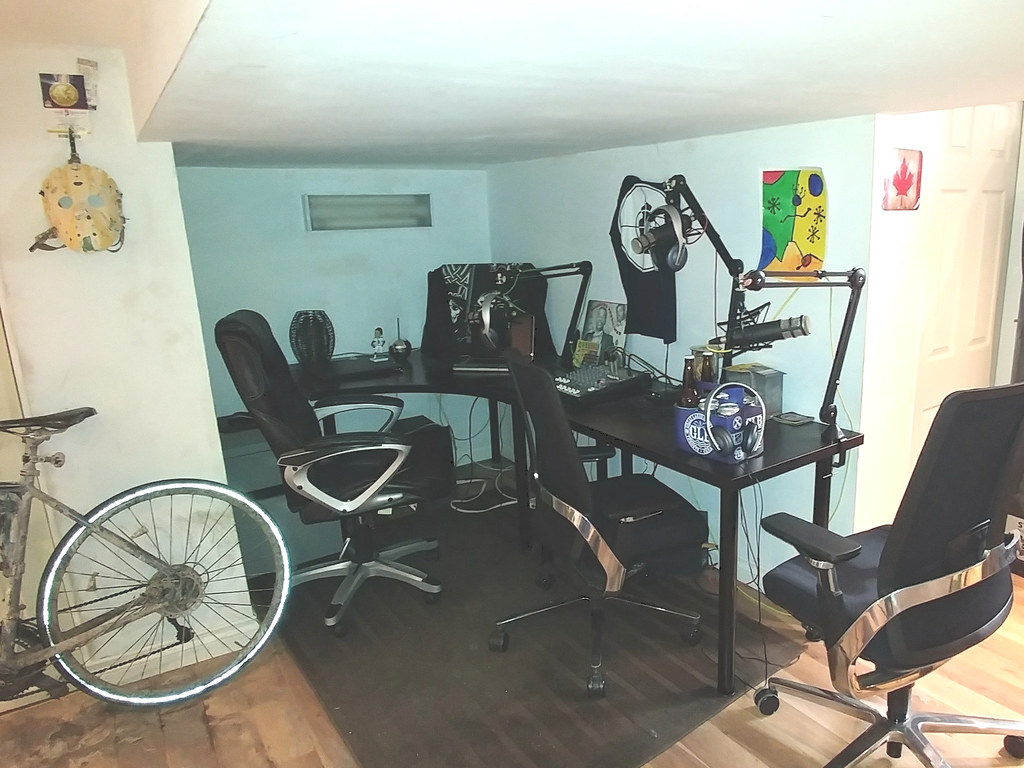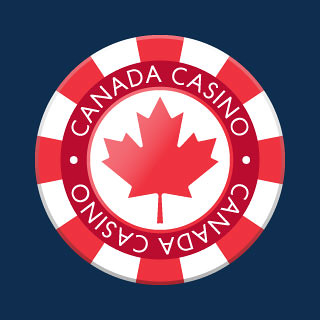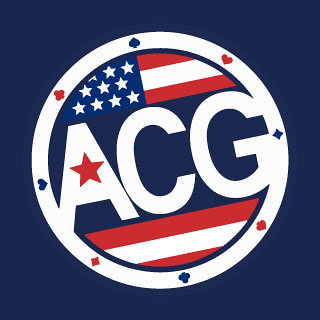Last week, I borrowed an e-book from the library. It was called "Podcasting for Dummies" and had been recently updated, so I wanted to check in and see if I could learn a thing or two. As it turns out, having digitally produced podcasts for over a decade and having rolled my own for over five years has taught me an awful lot.
As with most things in life, you learn the most from trial and error. Throw yourself into it, get your hands dirty, and figure it out. In 2006, when I helped Humble and Fred put their first podcast episode online, there were no great resources out there. You read what you could find and dove in. By the end of the day, you were a much wiser man than when you awoke that morning.
I'm about to record the 300th episode of Toronto Mike'd. There are actually 10 episodes of Your Blog Sucks sitting in the XML feed that aren't canon, so I'm technically about to record my 309th episode, but that detail isn't important. If you're interested in starting your own podcast, here's what is important.
Content May Be King, But if it Sounds Like Shit, Nobody Will Listen
I am a big substance over style guy, but when it comes to audio, how it sounds is vital. People won't listen to a poorly recorded podcast. You can record an MP3 with a $15 USB mic, but that doesn't mean you should.
I took a "go big or go home" approach to the audio, which is ironically located in the basement of my home. With consultation by Andrew Stoakley, I purchased a Mackie professional mixer and three RØDE Procaster microphones. These mics aren't cheap. In total, I spent $1600 for the mixer, microphones, stands, headphones and cables. I've since added three boom swing arms bringing the total cost of recording hardware to well north of $2000, and this does not include the laptop!
I managed to get my hands on an old Macbook which is where I do the recording and play the musical elements on a soundboard. The soundboard was $50 and I've had to replace the Macbook's hard drive, but otherwise I've kept this particular expense in check. You should be able to run the mixer through any functional laptop, regardless of the operating system.
Good News! Audio Software is Powerful and Free!
Once your studio is set up and connected to a laptop (or desktop!), you need audio recording software. This software is where you do the actual recording, editing, processing and MP3 creation. I have great news on this front. The best software for this purpose is completely free and available for all operating systems. I highly recommend Audacity.
I didn't start out using Audacity, but at some point I made the switch and I'm very glad I did. Audacity just works and the price is right. It's a podcaster's best friend.
I Choose Not to Edit
The aforementioned "Podcasting for Dummies" I read last week had a big section on editing with examples of when you'd want to edit your podcast. I can honestly say after 300+ episodes I've never edited a word for any of those reasons.
To borrow an antiquated expression, I record "live to tape". It all unfolds as you hear it. I bring in the audio elements in real-time, fading as it happens via the mixer. Once a guest or two has kindly asked me to remove something they said because they felt it might compromise their severance, and once a journalist asked me to remove a section because it violated a judge's publication ban, and if specifics were uttered, like a phone number or specific home address, I might remove that, but that's it. Otherwise, I trim the dead air at the beginning and the end and my editing is complete.
I'm not saying you shouldn't edit your content, merely that I've chosen not to edit my content. The "live to tape" approach is more fun and saves me time I don't really have.
What's In a Bit Rate?
Once the episode is recorded, I export it to MP3 via Audacity. There are many options here, and I've tried a multitude of them when it comes to bit rate. For a while, I was heavily favouring quality instead of file size, but I've since compromised a bit and settled on 160kbps. When it comes to the bit rate that makes sense for you, trial and error is the only way to go. It will all come down to a compromise you can live with between quality and size.
ID3 Metadata Tags
Many will subscribe, many will play directly from the site, but others will choose to download the MP3 file and play it locally or on their mobile device. For those people, your MP3's ID3 metadata tags are important. And by important I mean it will be annoying as hell if you don't add them when you export the audio to MP3.
I like to add as much detail here as possible, including updating the episode name to include the episode number. When it comes to ID3 metadata tags, the best practice I recommend is "the more, the merrier". There are dozens of ways to listen to your podcast and you never know which method a listener prefers.
To the Cloud With Your MP3
Once you've generated an MP3 file, you need to get it from your computer to a publicly accessible web server. My episodes are hosted by a local company called ts2 but there are plenty of options. What you need depends on a few factors:
- the size of your files
- the popularity of your podcast
- your budget
At the end of this long entry, you'll learn how I can hold your hand. Getting the file from your local computer to your web server is easy. I use a free FTP client called Filezilla.
XML
Some will call it RSS, and that's cool, but it's really an XML document that will serve as the heartbeat of your podcast syndication. It's what separates audio from a podcast. An MP3 file doesn't become a podcast until you add a valid XML file.
When you submit your podcast to aggregators like Apple Podcasts or Google Play Music, they will be most interested in the url for your XML file. When you update that XML file, it alerts subscribers that you have a new episode available. This is where you share such detail as:
- episode name
- episode description
- episode length
- publication date and time
- MP3 size
- MP3 url
- podcast name
- podcast author
XML is very strict with little to no forgiveness for even the slightest error. Just yesterday I typed in 2017 instead of 2018 and broke the whole thing. In my humble opinion, this is most intimidating part of the podcast chain, but if you know the rules and follow them, it doesn't need to be scary. Heck, I've updated my XML file over 300 times and it remains perfectly valid. You can see it now at https://www.torontomike.com/torontomiked.xml. If I can do it, you can do it.
Of course, I have made mistakes, so here are a few tips I've learned along the way.
- Do not publish your new XML file until the MP3 has finished uploading
- Before you publish, eyeball your code - it's better to catch your typos and errors before it's uploaded to the web
- When in doubt about XML protocol, Google it
Again, don't let XML frighten you. There are services you can buy that will auto-create one, but you lose a great deal of control going that route and it's much less fun. I highly recommend you write and maintain your own XML file, and again, I'm an expert who can help.
Your Podcast Needs a Home on the Web
With your XML submitted to Apple and Google and Stitcher and the other popular podcast aggregators, subscribers will be able to find your podcast. I'm here to tell you a big podcasting secret. Many will listen without ever subscribing to your feed!
Your podcast needs a home on the web that you maintain and control. For my podcast, that's https://www.torontomike.com/podcast/. I post every episode there, complete with an HTML5 audio player so people can click play and hear the episode. This is also convenient for those who prefer to download the MP3. It's your podcast's home on the web that you control and it's where you can link people, regardless of how they consume their podcasts.
Awareness is the Toughest Part
Many podcasters are broadcasters you know from radio and/or television, or writers you've read in the paper or magazines. In other words, they're already famous. For these people, awareness is a great deal easier.
But what about the rest of us? If you're not already famous from radio, television or elsewhere, how do you make people aware you have a podcast so they can check it out? This is very difficult, especially if you don't have a marketing budget.
I promote my podcast on my blog and via Twitter. Of course, that's merely speaking to your existing audience and doesn't do much to grow the base. In my experience, there's only one way to vastly increase download numbers and increase awareness that you have a podcast worthy of sampling. You have to create good content and stick with it for years. People love to tell their friends and family about the great indie podcast they've discovered.
On that note, let's close with the most important detail of all...
Content Really Is King
Your podcast can sound great and be around for years with new episodes posted every week, but if it sucks, nobody will want to listen. Considering a listener has to truly want to listen in order to hear a podcast, the content is more than key. It really is king.
The good news is you don't have to hit a home run your first at bat, so long as you continually improve. Hopefully, if it's compelling content, you'll find your voice by episode 100 and will be truly grooving by episode 200. Keep learning, keep improving, and keep at it. Listen to your episodes critically and work at improving the quality every time you press record.
If you're interested in starting a podcast, either for yourself or a corporate podcast, tell me about it. I'd like to help. I've broken so many eggs you can feast on omelettes until you're stuffed.
Thanks for giving Toronto Mike'd a spin. If you've yet to take the plunge, you can cherry pick an episode here. Happy podcasting!







